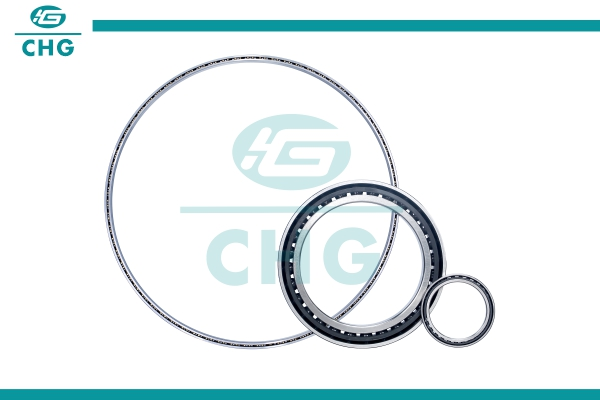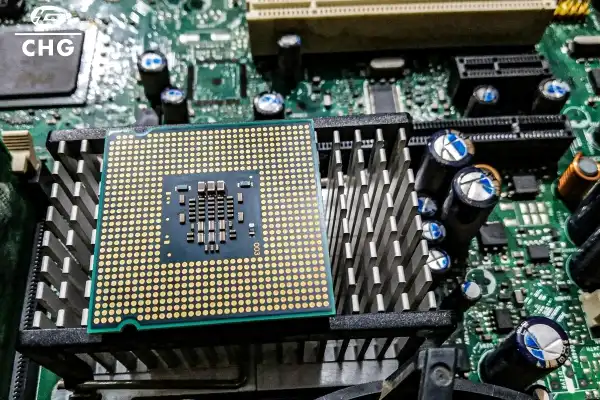What are the Key Features of Type X Thin Section Bearings?
Type X thin section bearings represent a groundbreaking advancement in bearing technology, characterized by their remarkably slim profile and exceptional performance capabilities. These specialized bearings maintain the same bore diameter and outer diameter as conventional bearings while featuring a significantly reduced cross-section. This unique design makes them invaluable in applications where space is at a premium, yet high precision and reliability are essential. The innovative construction of Type X thin section bearings combines lightweight properties with robust performance, making them increasingly popular in various industrial and technological applications.
How Do Type X Thin Section Bearings Compare to Traditional Bearings?

In the realm of bearing technology, Type X thin section bearings stand apart from their traditional counterparts in several significant ways. The most notable distinction lies in their dimensional characteristics, where these bearings maintain a cross-sectional height that is remarkably smaller than conventional bearings while retaining the same bore and outer diameter dimensions. This unique feature provides engineers and designers with unprecedented flexibility in creating compact machinery and equipment.
The weight reduction achieved through the thin section design is particularly noteworthy, as it can be up to 40% lighter than conventional bearings of similar diameter. This weight advantage translates directly into improved efficiency and reduced energy consumption in the final application. Despite their lighter construction, Type X thin section bearings incorporate advanced materials and manufacturing techniques that ensure they maintain impressive load-bearing capabilities.
Another crucial advantage is their reduced friction characteristics. The optimized design of Type X thin section bearings includes specially engineered raceways and rolling elements that minimize rolling resistance. This results in smoother operation and lower operating temperatures, which in turn extends the bearing's service life and reduces maintenance requirements. The reduced friction also contributes to energy efficiency, making these bearings particularly attractive for applications where power consumption is a critical consideration.
The precision capabilities of Type X thin section bearings are equally impressive. These bearings are manufactured to extremely tight tolerances, often achieving running accuracy that surpasses ABEC-7 standards. This high precision is maintained across all critical dimensions, including roundness, concentricity, and surface finish of the raceways. The result is exceptional rotational accuracy and consistency, which is essential for applications in robotics, medical equipment, and precision instruments.
What Industries Benefit Most from Type X Thin Section Bearings?

The versatility and unique characteristics of Type X thin section bearings have made them indispensable across numerous industries, each benefiting from specific aspects of their design. In the semiconductor manufacturing industry, these bearings are crucial components in wafer handling equipment, where their precise operation and minimal profile enable the development of increasingly compact and efficient processing machinery.
The aerospace sector has embraced Type X thin section bearings for their exceptional performance in satellite systems, guidance equipment, and aircraft control surfaces. The combination of low weight, high precision, and reliability makes them ideal for these demanding applications where failure is not an option. Space-constrained designs in modern aircraft benefit particularly from the reduced cross-section, allowing for more compact and lightweight mechanical systems.
In medical equipment manufacturing, Type X thin section bearings have revolutionized the design of diagnostic and therapeutic devices. CT scanners, MRI machines, and surgical robots rely on these bearings for smooth, precise movement while maintaining strict space constraints. The bearings' ability to operate quietly and with minimal vibration is especially valuable in medical applications where patient comfort and diagnostic accuracy are paramount.
The robotics industry represents another major beneficiary of Type X thin section bearing technology. These bearings enable the creation of more compact joint designs in robotic arms and automated systems, contributing to improved range of motion and precision in manufacturing processes. The reduced weight of the bearings also allows for faster acceleration and deceleration of robotic components, enhancing overall system performance.
What Maintenance Requirements Are Essential for Type X Thin Section Bearings?

Maintaining Type X thin section bearings requires a comprehensive understanding of their unique characteristics and operating conditions. Despite their robust design, proper maintenance is crucial for ensuring optimal performance and longevity. The maintenance protocol begins with proper installation, which requires precise alignment and careful handling to prevent damage to the thin cross-section.
Regular monitoring of operating conditions is essential, with particular attention paid to temperature, speed, and load parameters. While these bearings are designed to handle significant loads relative to their size, they must operate within specified limits to prevent premature wear or failure. Implementing a condition monitoring program that includes vibration analysis and temperature monitoring can help detect potential issues before they develop into serious problems.
Lubrication management plays a critical role in the maintenance of Type X thin section bearings. The correct type and amount of lubricant must be selected based on the specific application requirements. Over-lubrication can be as damaging as under-lubrication, particularly given the bearings' thin cross-section. Many applications benefit from sealed bearing designs that come pre-lubricated, reducing maintenance requirements and preventing contamination.
Environmental protection is another crucial aspect of maintenance. These bearings must be shielded from contamination and moisture, which can significantly impact their performance and service life. In applications where exposure to harsh conditions is unavoidable, appropriate sealing solutions must be implemented and regularly inspected to ensure their effectiveness.
Regular inspection intervals should be established based on operating conditions and criticality of the application. During inspections, particular attention should be paid to signs of wear, unusual noise or vibration, and the condition of seals and lubricant. Documentation of maintenance activities and operating history helps in predicting maintenance needs and optimizing the maintenance schedule.
Luoyang Huigong Bearing Technology Co., Ltd. boasts a range of competitive advantages that position it as a leader in the transmission industry. Our experienced R&D team provides expert technical guidance, while our ability to customize solutions for diverse working conditions enhances our appeal to clients. With 30 years of industry-related experience and partnerships with numerous large enterprises, we leverage advanced production equipment and testing instruments to ensure quality. Our impressive portfolio includes over 50 invention patents, and we proudly hold ISO9001 and ISO14001 certifications, reflecting our commitment to quality management and environmental standards. Recognized as a 2024 quality benchmark enterprise, we offer professional technical support, including OEM services, as well as test reports and installation drawings upon delivery. Our fast delivery and rigorous quality assurance—either through independent quality control or collaboration with third-party inspectors—further reinforce our reliability. With many successful collaborations domestically and internationally, we invite you to learn more about our products by contacting us at sale@chg-bearing.com or calling our hotline at +86-0379-65793878.

References:
1. Journal of Bearing Technology, "Advances in Thin Section Bearing Design," 2023
2. Precision Engineering Quarterly, "Comparative Analysis of Modern Bearing Technologies," 2024
3. Industrial Maintenance & Plant Operation, "Maintenance Strategies for High-Precision Bearings," 2023
4. Aerospace Engineering Review, "Bearing Solutions in Modern Aircraft Design," 2024
5. Medical Device Engineering Journal, "Precision Components in Medical Equipment," 2023
6. Robotics Technology Review, "Evolution of Bearing Systems in Industrial Robotics," 2024
7. Manufacturing Engineering, "Thin Section Bearings in Semiconductor Production," 2023
8. Journal of Tribology, "Lubrication Systems for Precision Bearings," 2024
9. International Journal of Mechanical Engineering, "Design Principles of Modern Bearing Systems," 2023
10. Industrial Automation Quarterly, "Bearing Technologies in Smart Manufacturing," 2024

